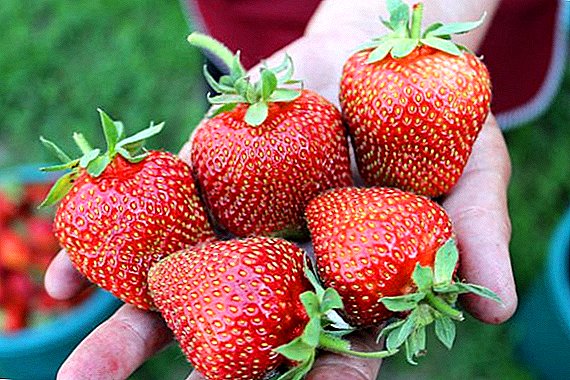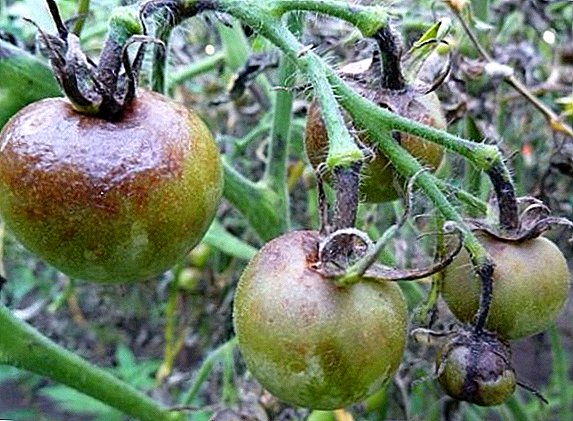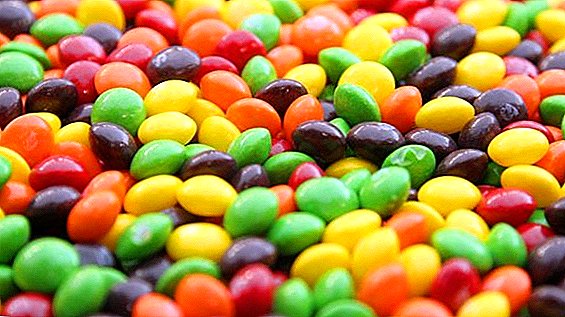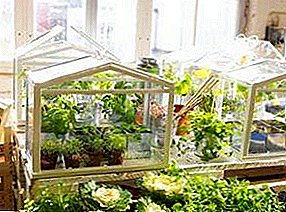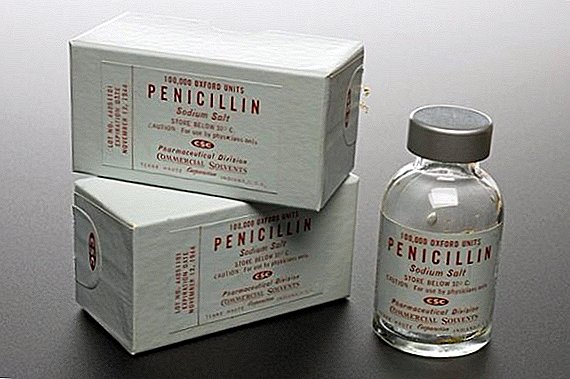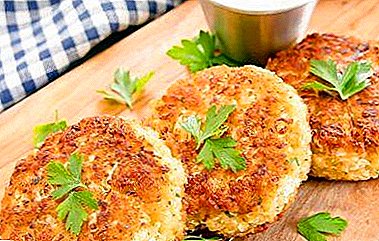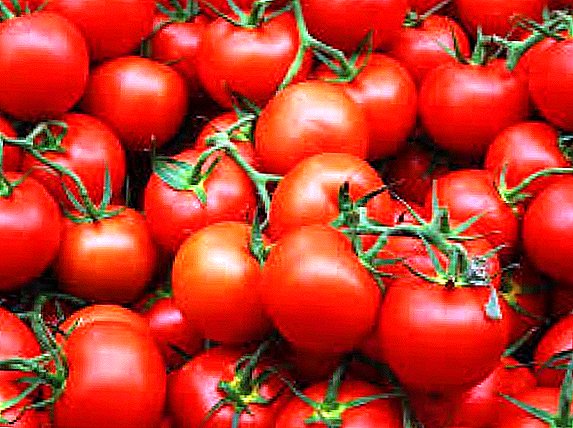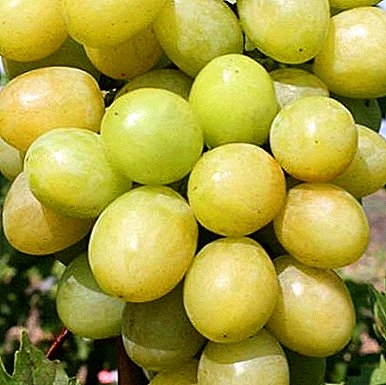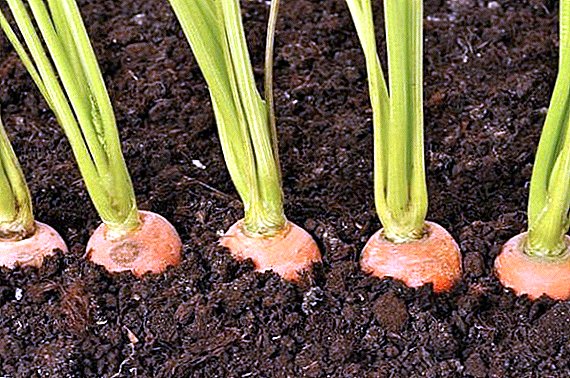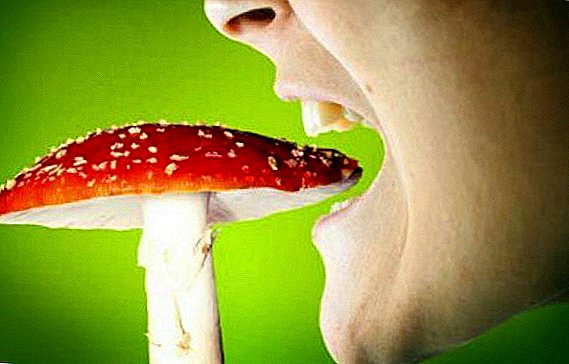 Delicious marinated mushrooms, white, fried in sour cream, rich mushroom soup - the number of dishes with mushrooms does not count. Many people prefer to pick their own mushrooms for home cooking, because it is not only profitable, but also a pleasant pastime. However, such activities can have unpleasant consequences if you do not know all the intricacies of the process. How to distinguish edible species from poisonous ones, and how dangerous mistakes are in such cases - let's discuss in more detail.
Delicious marinated mushrooms, white, fried in sour cream, rich mushroom soup - the number of dishes with mushrooms does not count. Many people prefer to pick their own mushrooms for home cooking, because it is not only profitable, but also a pleasant pastime. However, such activities can have unpleasant consequences if you do not know all the intricacies of the process. How to distinguish edible species from poisonous ones, and how dangerous mistakes are in such cases - let's discuss in more detail.
Danger of poisoning even by edible species.
To begin with, edible mushrooms can be harmful to health. This product actively absorbs substances from the environment, the soil on which it grows, the hands that it is collected. So the natural vitamins that mushrooms are rich in are included in the composition, but also there are easily:
- bacteria. They are everywhere, including in food. Non-heat treated products are a direct route to poisoning. The risk group includes pickled mushrooms, the recipe of which does not include cooking. And in the case of lack of salt, such marinade is harmful to health;
We recommend to learn how to pickle for the winter milk mushrooms, chanterelles and ryadovki.
- toxins. Their mushrooms can grow as in the period of growth, being near highways, plants and factories, and in the process of storing an already harvested crop. For example, during a long stay in galvanized dishes.
 In addition to the harmful composition, cause poisoning:
In addition to the harmful composition, cause poisoning:- overuse. The stomach is hard to process such food, so large portions cause a disturbance of the digestive processes. People who suffer from chronic diseases in the active phase, the elderly, children, and allergies are especially at risk;
- worms, spoiled, damaged copies. In their fruit bodies, decay products have already appeared that are poisonous to humans;
- mushrooms incompatible with alcohol. Such species as govorushka claviform, gray and white mushrooms, have a toxin, which is absolutely harmless in boiled or pickled form, if you do not use it with alcohol. Under its influence, the toxin dissolves, and within an hour the first signs of poisoning appear;
- wrong canned pickles. Undercooked or under-salted pickled mushrooms, stored in glass containers, quickly deteriorate, and harmful bacteria originate in them. This can happen because of a badly twisted cover.
Important! To understand that something is amiss with conservation, and it is better not to use it, will allow the lid to swell on the can.
Is it possible to check the degree of edibility "by eye", and what is fraught with
In the people there are many ways to identify poisonous fungi, but such methods are very doubtful. Beginner mushroom pickers believe that the smell will help in this matter: supposedly harmful varieties have an unpleasant, peculiar smell.
However, each person perceives flavors in his own way, besides some edible species also smell unpleasantly (for example, ordinary champignon).
Someone believes that insects and worms do not eat poisonous pulp, therefore, only harvested specimens are collected. A fundamentally wrong practice that does not have scientific evidence. In addition, we remember what fraught with the use of wormy products.  But the statement that the use of alcohol with mushrooms can neutralize the poison of even the most dangerous species became the most health threatening statement. Alcohol does not have similar properties, moreover, in some cases it only worsens the situation.
But the statement that the use of alcohol with mushrooms can neutralize the poison of even the most dangerous species became the most health threatening statement. Alcohol does not have similar properties, moreover, in some cases it only worsens the situation.
Did you know? Mushrooms grew on our planet before the appearance of dinosaurs here. And some species have not changed at all since then.
Folk ways and their effectiveness
Among the popular methods there are several of the most popular ones, the effectiveness of which is now being evaluated from a scientific point of view.
Check with a bow
An onion or garlic is often used for the edibility test. Mushrooms are washed, cleaned and sent to the pan with water for gas. When the water starts to boil, add a few slices of peeled onion or garlic, and then closely monitor.
It is believed that vegetables will get a brownish tint if poisonous specimens are cooked in a saucepan.
Video: check mushrooms with onions But in fact, everything is simpler: onions and garlic change color under the influence of tyrosinase - an enzyme that is present in both edible and poisonous mushrooms. Therefore, this method can not be considered effective.
Did you know? For a long time, scientists did not know which kingdom the mushrooms belong to, because in terms of protein, they are closer to the animal world, but the amount of carbohydrates and minerals brings them closer to plants. The dispute was resolved in 1960 by the creation of a separate kingdom of mushrooms.
We use milk
No less simple and affordable way - check the usual milk. It is believed that if poisonous mushrooms get into the liquid, the milk will quickly turn sour. From a scientific point of view, the statement is unjustified.
Organic acids provoke acidification, as well as pepsin, an enzyme that is found in different types of fungi, and does not affect their suitability for consumption.
How to check mushrooms with silver
Another myth relates to silver. The popular method says that a silver object thrown into a container with boiling mushrooms will necessarily darken on contact with poisonous species.
Video: Checking Mushrooms with Milk and Silver And silver is really getting dark. Only not from poison, but from sulfur in fungal amino acids.
Important! Sulfur is in many edible species, but, what is the most dangerous, this substance is absent in some poisonous varieties, therefore it will not be possible to calculate them in this way.
Vinegar and salt to neutralize mushrooms
Some folk remedies are not aimed at identifying, but at neutralizing the poison. The most popular method in this case involves the use of vinegar and salt.
During the cooking process, it is necessary to add the vinegar-saline solution to the mushrooms, and it will supposedly destroy the poison. Yes, a similar result is possible with low-toxic species (for example, stitches), but this method does not really treat poisonous specimens such as the Amanita and the pale toadstool.
Basic rules for the selection of mushrooms in the forest
Gathering after the next rain in the forest for the harvest, remember that the mushroom picker, like a detective, must take into account a lot of factors, analyze various signs, before choosing a worthy replenishment for his basket.  First of all, remember:
First of all, remember:
- deadly poisonous species in fact a bit, so they need to know thoroughly. Find out from more experienced colleagues or on the Internet which dangerous varieties grow in your area and study them in detail. It doesn’t hurt to even upload a photo to your phone so that at the right moment there is an example for comparison;
- dry and hot weather - not the best time for a "quiet hunt";
- do not take overgrown mushrooms (we will tell about the reasons further);
Did you know? The largest white mushroom in the world has grown in the USA. Its weight was 140 kg, and diameter - 2 m.
- Before use, withstand a few hours in ordinary water., periodically changing it to remove more toxins. If possible, try to cook mushrooms, so the likelihood of poisoning is significantly reduced.
And the basic rules of this mushroom picker will take a closer look.
False and real
Everyone who has been involved in mushroom hunting knows that all edible species have poisonous twins, from which only small details distinguish them. It is these features that a mushroom picker needs to know in order to harvest crops that are not harmful to health.
Let's look at examples of the most common types:
- White mushroom. Its main "trick" is a hat of white or beige color. If you see a mushroom with a red, brown, yellowish cap, do not touch it. You can also break off a piece of a hat. In a real white variety, the fracture spot will not change, but in the satanic mushroom there will begin to show blue there;

We advise you to familiarize yourself with the magical properties of ceps and with methods of harvesting and freezing porcini mushrooms for the winter.
- honeydew. It is very easy to make a mistake here if you do not pay attention to the leg in time. In real experiences from the legs to the cap stretches "skirt", as if connecting these parts. False experiences have no such “accessory”. The second sign is a plate cap with scales, which only edible species have. Poisonous specimens smell unpleasantly and have an unnaturally bright color;

- butter dish. These representatives of the species are distinguished by slippery cap and foot. From touching them on the fingers, traces remain, as if from oil, this is especially noticeable in wet, cool weather. In sunny time, their skin is glossy and easily stretches when removed with a knife. The bottom of the cap resembles a sponge, but the color of the edible species may differ.

Important! You can identify inedible specimens by cutting off a piece of pulp. The cut of poisonous varieties will immediately turn red or turn blue.
- champignon. Its main counterpart is a poisonous pale grebe. They are distinguished by their mushroom pickers on the skin (in champignons it is smooth, dry, scaly in places), a cap (round in an edible mushroom and slightly flattened in a poisonous mushroom) and plates under it. In the champignon, they darken at the touch, while the toadstool does not react at all. On the leg of the edible specimen you can see a light film at the base, which a pale toadstool cannot boast. In addition, these comrades prefer a different environment: the mushroom grows in open places, forest edges, marshy meadows, in vegetable gardens, while the poisonous twin lives in the shade of deciduous forests;

- brown sucker. Here it will be more difficult to determine the cunning double. Sign of the first: clean bezel. False browns usually have a bitter taste, so insects and worms avoid them. Sign of the second: clean foot. It should be a picture resembling birch bark. If it is missing, or there are streaks similar to blood vessels, discard such an instance. Sign of the third: a greenish or brown shade of the cap, which casts a pink bottom. This brownish flower does not have such colors. Symptom Four: cap bezel. If there is a velvety surface under the fingers, it is bad, because it is smooth in the edible. And finally break the flesh - the brownberry will be white, not pink;
 Edible boletus
Edible boletusDid you know? Mushrooms are the progenitors of antibiotics. It was from yeast mushrooms in 1940 that penicillin was extracted.
- boletus. It is rarely confused with other species, but among twins, the closest to him is the gorchak (gall fungus). In contrast, the orange-cap boletus does not grow in coniferous forests, has a mesh pattern on the stem, its tubular layer casts pink, and the flesh after the cut gradually changes from white to pink. And the bile twin always looks beautiful, neat, so experienced mushroom pickers avoid it.
 Gorchak (gall mushroom)
Gorchak (gall mushroom)The right place: where you should not pick mushrooms
Although mushrooms are able to grow almost anywhere, but this does not mean that they can be collected everywhere. It must be remembered that this culture eagerly absorbs substances from the environment, and try to avoid:
- roads. Exhaust gases are not the best supplement for human health, so we move to the forest at least a kilometer away from the large highways, and it will be enough for a 500 m from the usual route;
- railway tracks;
- factories and plants;
- oil storages and fuel bases;
- landfills;
- agricultural enterprises (when growing their products, they can use chemicals and pesticides, which are transmitted through the soil to mushrooms growing nearby).
Overgrown mushrooms
A separate risk group is old specimens of edible varieties. Even growing in safe zones, they can accumulate enough heavy metals and harmful components in themselves for a long time to spoil a person’s health. For this reason, try to collect only young shoots.
Did you know? Mushroom pressure can reach 7 atmospheres, so characteristic caps are often found among asphalt roads. During its growth, such a "baby" is able to break through not only concrete, but also marble and iron.
But if it was not possible to avoid overgrowth, then boil them for at least 20 minutes before use. After the water must be drained, and only then the mushrooms will be ready for further processing.
First aid for mushroom poisoning
Mistakes, unfortunately, sometimes happen to experienced mushroom pickers, so it is extremely important to be able to provide first aid in case of poisoning.
This is a set of activities that includes:
- ambulance call. This should be done as soon as the first signs appeared;
- gastric lavage. Ensure the early removal of poison from the body can vomiting. To do this, let the victim drink 1-2 liters of potassium permanganate solution (the instruction for preparation should be on the package). The same effect will be caused by the use of sorbents (activated, white coal) at the rate of 1 gram of the drug per 1 kg of human weight. Vomiting continues to cause as long as there is no water left in the stomach. If there is no special equipment at hand, ordinary salt will do. For 1 cup of water dilute 2 tbsp. l salt and give a drink. Such a solution will have a laxative effect. For the same use and the usual laxatives (1-2 grams per 1 kg of weight), but the total number of drugs should be divided into 2-3 doses during the day;
- body fluid replacement. Vomiting and diarrhea dry up dramatically, so after removing toxins, the first thing to do is to balance the fluid. To do this, use sweet tea, mineral water.
 Also, it would not hurt a patient to put a warm heating pad under the feet or on the stomach of the patient to normalize blood circulation. When the first aid is properly rendered, the emergency team will continue the treatment process. In such cases, timeliness is important, it helps to avoid complications.
Also, it would not hurt a patient to put a warm heating pad under the feet or on the stomach of the patient to normalize blood circulation. When the first aid is properly rendered, the emergency team will continue the treatment process. In such cases, timeliness is important, it helps to avoid complications.Going into the woods, do not rely on popular methods: whatever the reasons for their occurrence, but the effectiveness of such funds is not scientifically proven. If any fungus is in doubt, do not take it. Remember the rules of mushroom hunting and take care of your health and your loved ones.


